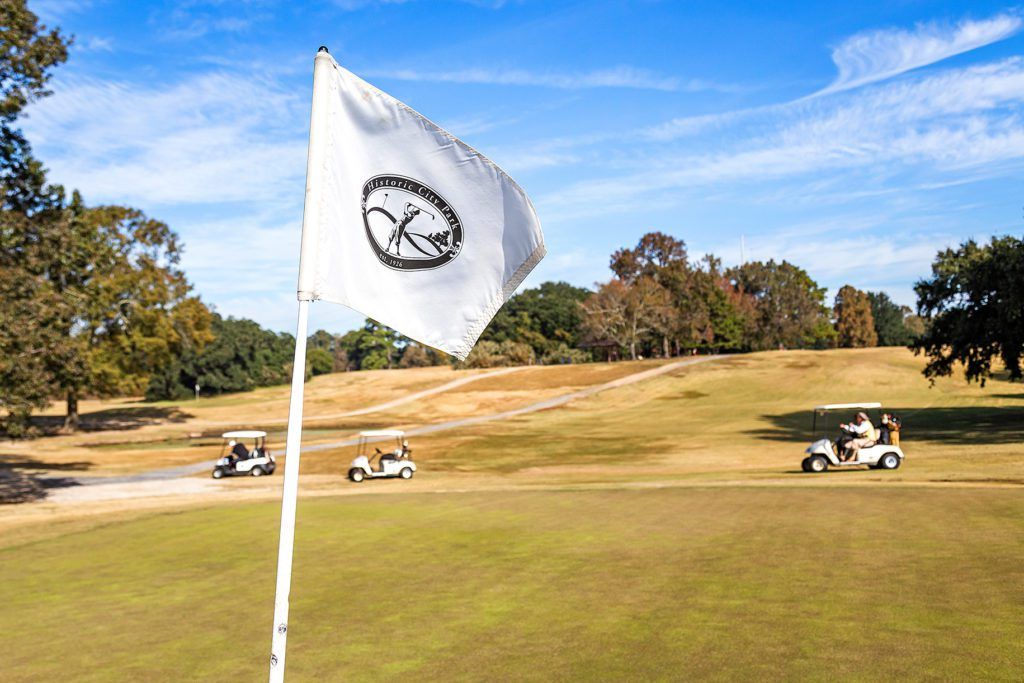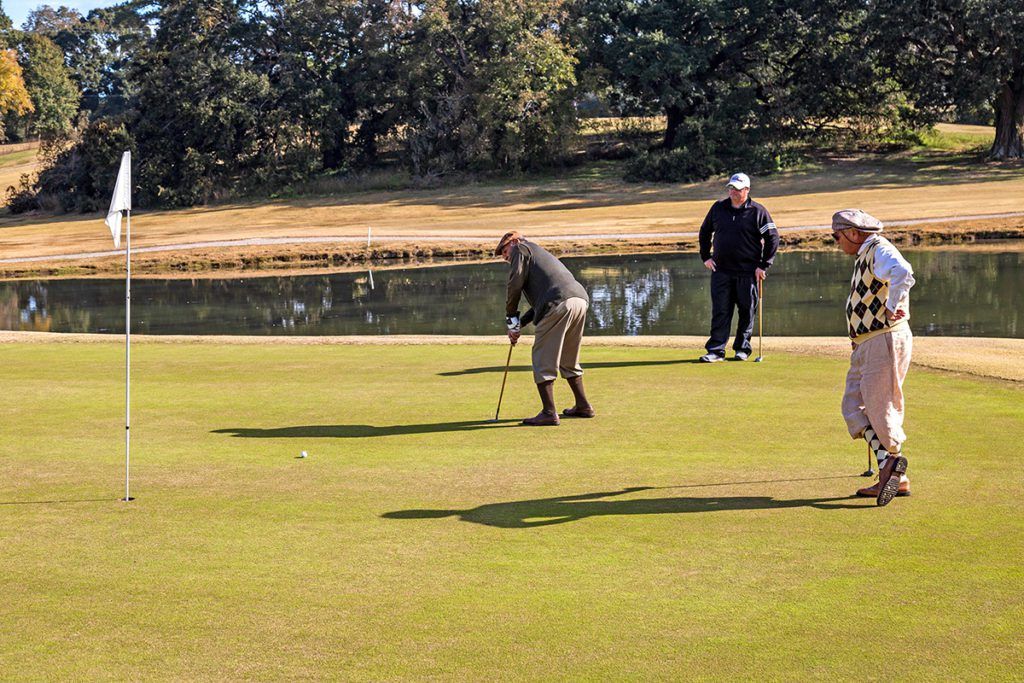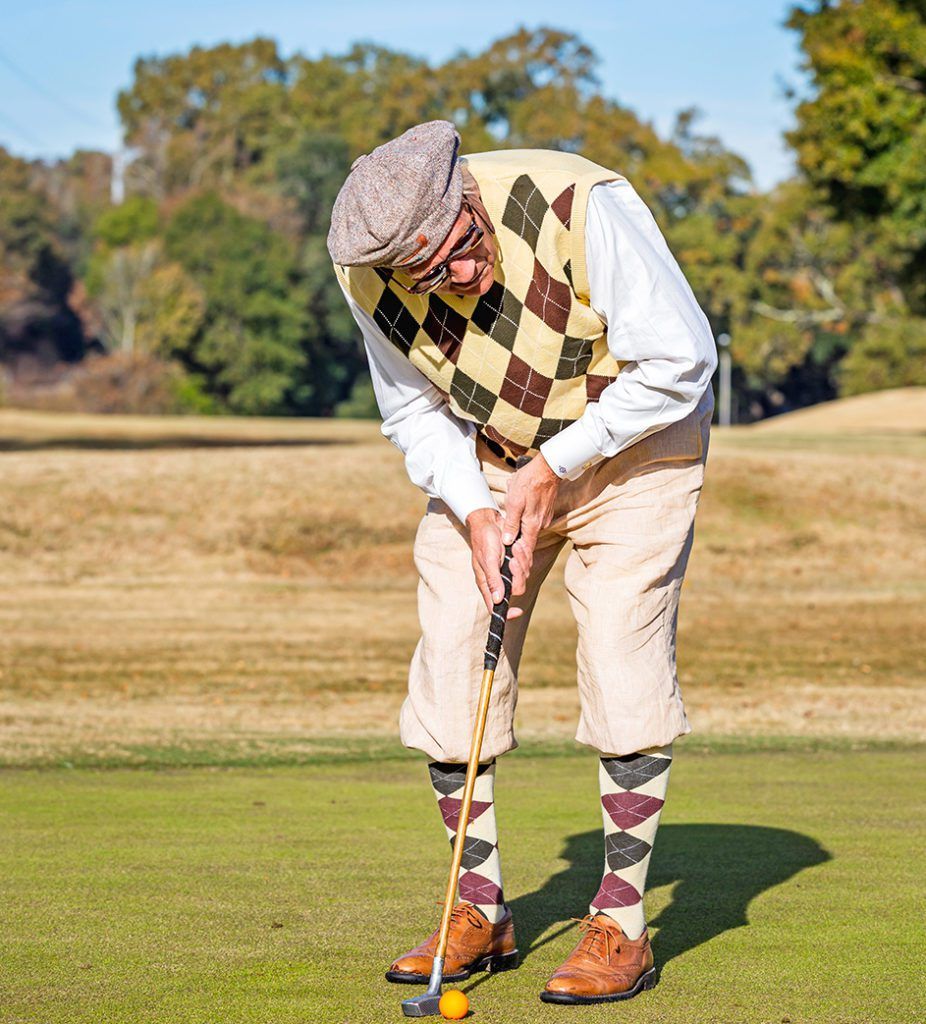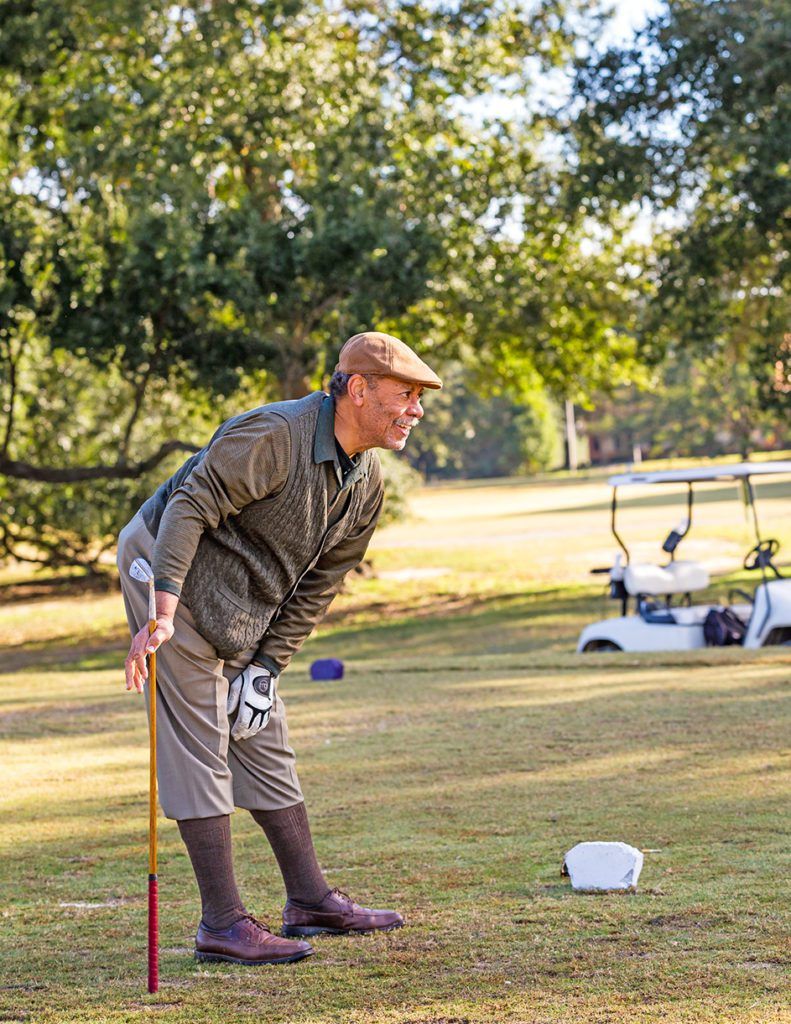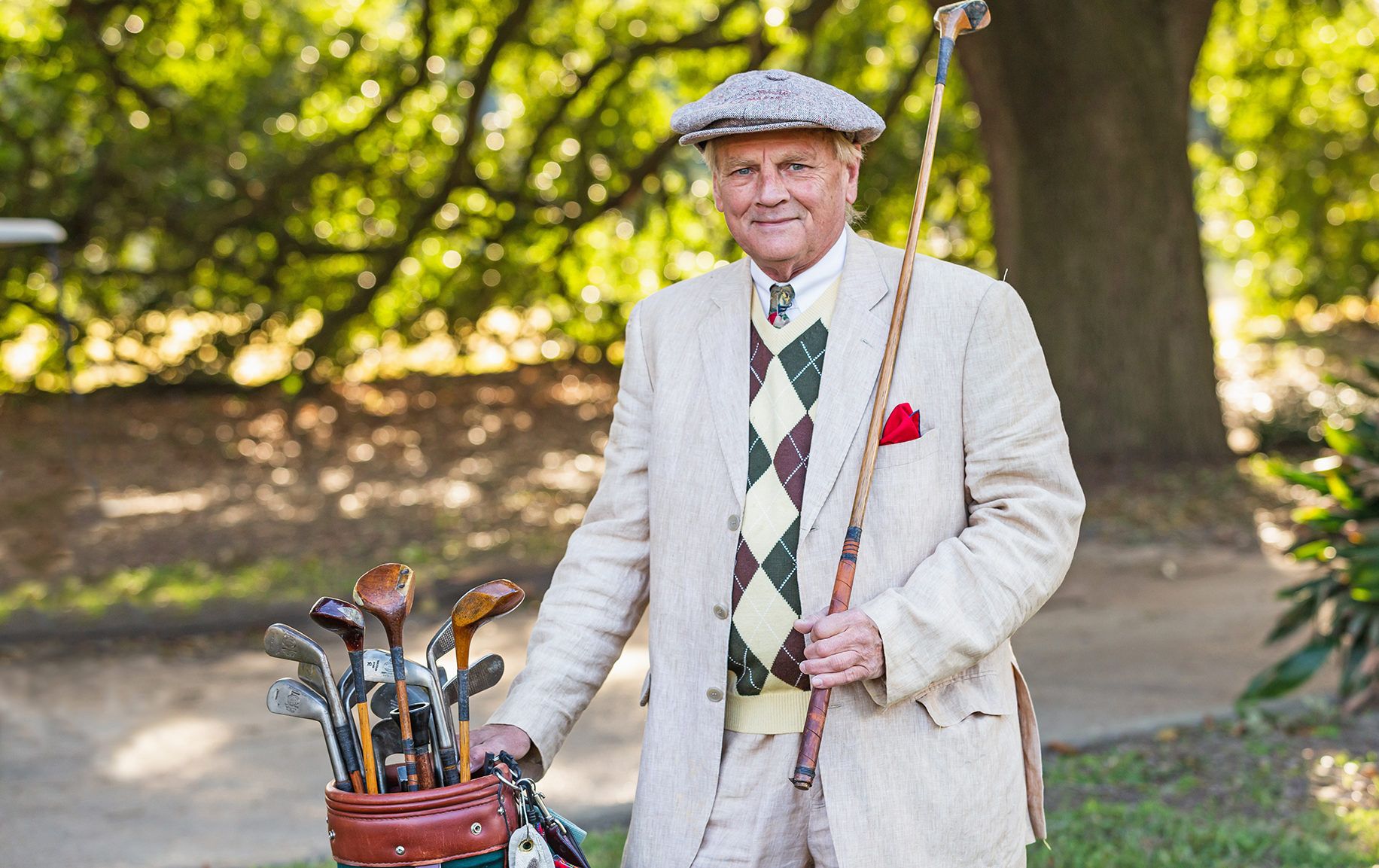
Par for the course: Hickory golf enthusiasts embrace century-old equipment at City Park
When Stan Spring debuted his hickory wood-shafted golf clubs at Historic City Park Golf Course several years ago, the course had changed very little since its creation in 1926 by Scottish golf course master architect Tom Bendelow.
With its narrow fairways, treacherous ridged greens, unpredictable bunkers and distinctive mounds, the City Park course is a hickory club enthusiast’s dream. “The first time I ever played it, it was like I was in hickory heaven,” Spring says of the 40-acre, nine-hole course located smack dab in the middle of Baton Rouge.
Spring, 68, and thousands like him across the country take pleasure in playing with vintage hickory clubs—the kind that were in regular use when the links-style City Park Golf Course opened—instead of the graphite-shafted and metal clubs modern golfers use today. Hickory clubs help today’s golfers appreciate how legendary champions excelled before modern technology changed the game. “You can’t be thin-skinned if you’re playing hickory,” Spring says. “To me, it’s completely different than modern golf.”
Today’s modern golfer might have as many as 14 clubs in his or her bag. But hickory golfers use just seven clubs to create shots, Spring says. That requires ingenuity and skill not easily replicated with a Big Bertha driver, he says. “You can take the same club and you can use it in a different way,” says Spring. “There’s a lot of creativity in it.”
Pete Hittle, a transplant from Iowa who plays hickory golf each Thursday at City Park with Spring, says hickory golf takes finesse. “Playing hickory is like playing chess with a golf club,” says Hittle. “It’s so much more of a challenge to hit those clubs solidly and accurately.”
Hickory golf put the challenge back in the game for Hittle, 63, who admits he doesn’t play like he did as a young man. But, “to play City Park and get a good score, that’s very satisfying to me,” Hittle says.
More than a decade ago, Spring became interested in hickory golf after watching the movie Bobby Jones: Stroke of Genius, which told the story of the golfer who won all four men’s major golf championships in the 1930 season. Spring says the film got his wheels turning on what it was like playing with mesh balls and wood clubs compared to the modern game’s graphite-shafted clubs and dimpled golf balls.
Once Spring began collecting hickory clubs and experimenting with them on the golf course, he was hooked. The hickory clubs are between 75 and 90 years old and must be used more delicately than today’s modern golf clubs or they will crack. A softer golf ball must also be used.
Spring, a retired litigator, is working to improve the sport’s visibility in Baton Rouge. Through his interest in filmmaking, Spring is producing a documentary about City Park Golf Course and the hickory golf movement. He also started the Society of Hickory Golfers of Historic City Park Golf Course, an online Facebook group with approaching 100 members, and is working toward creating an all hickory club golf league.
“This is the closest thing to a historical links golf course, because it is—I mean, that’s the way it was built in 1926,” said City Park course PGA professional Danny Simoneaux in a teaser video for the documentary. “It’s remained basically unchanged for all those years. Just some minor modifications to two holes, but everything else is pretty much the way Tom Bendelow laid it out in the mid-’20s.”
In November, Spring hosted the First Hickory Golf Invitational Tournament at City Park—complete with bagpiper leading the walk to kick off the final round—with golfer Jack Terry winning the championship. “They all had a blast, which is the whole idea of hickory,” Spring says of the tournament. Coming up in April, Spring will help organize City Park’s first national hickory golf tournament.
Spring and Hittle say that, in addition to the skills it requires, they appreciate the camaraderie associated with the sport. “The thing about hickory golf is that it’s a fraternity more than a competition,” Hittle says. “Nobody gets overly excited about the competition. Sure, you want to try to win, but that’s not what it’s about. Preserving the game and traditions, that’s what we hold most dear.”
These traditions are part of the sport’s charm. Many hickory club enthusiasts dress the part of 1920s-era golfers with knee-length knickers, argyle socks, sweaters and caps, Spring says.
Hittle says he and Spring hope the hickory golf movement is growing so there will be more people to stand behind the preservation of City Park Golf Course. After all, the course, the community’s first municipal golf course, is one of only 20 in the country to be placed on the National Register of Historic Places. “Baton Rouge doesn’t seem to realize,” says Hittle, “they have an absolute national treasure on their hands.”
A Hickory Stick Introduction Day is set for February 15 at City Park Golf Course to discuss the new league and demonstrate to beginners how to play with wood-shafted clubs. The first national hickory tournament at City Park is scheduled for April 3-5. See brec.org for details.




